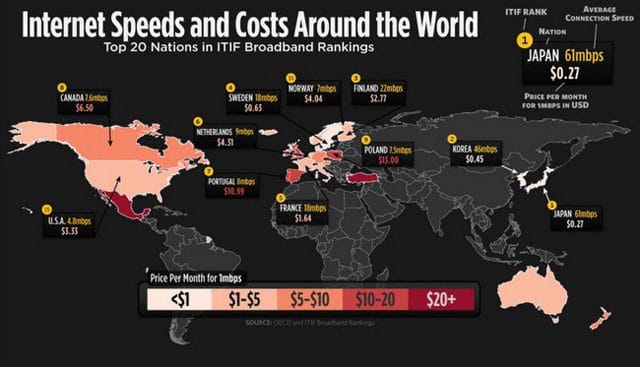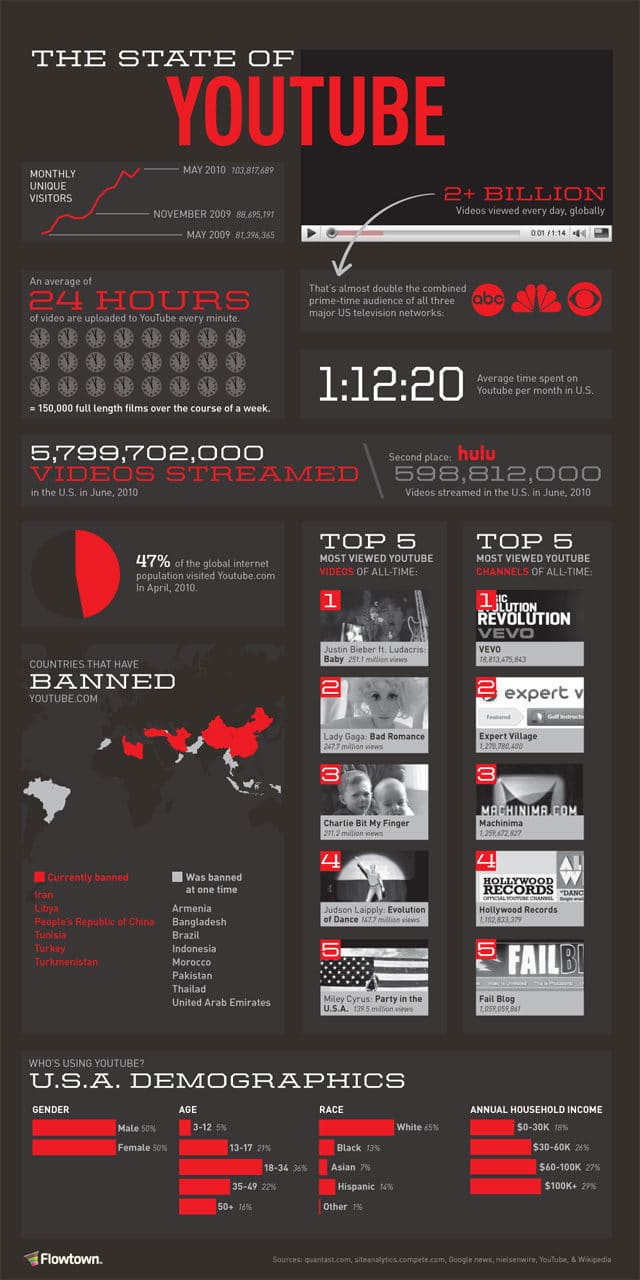Social networking has become a part of our lives to the extent where we can’t live without them anymore. However, history of social networking is not going back too far. That’s why, most of our parents have no idea what the Facebook is. We are in a time where lots of interesting features are introduced to social networks to provide the real social experience online and make it even more interactive. These efforts made online social networks a very powerful communication tool which we never even imagined.

If you take a look at the social networks, basically it allows you to connect with your friends and communicate with them. For communication you were able to use text in the early stages, but with time you are offered the facility of using rich media as well. With the improvements of broadband internet speeds, developers could introduce better rich media features to social networks like videos. In this article I’m going to take a look in to historical milestones of ‘social video networking’, technology used, its social impact and future trends.
Reasons for Growth
In the early time on Social Networks, most of the features were limited to text based communication such as Messages, wall posts, Blog, forums etc. After some time there was some involvement of graphical media such as images and GIF animation. Trend initiating online social networks including Friendster, MySpace and Hi5 were using various different combination of above features with different brandings.
There were several limitations for web applications to use rich media, mainly the speed of internet. During the time of ‘Dial up’, web developers had to think twice before they include even an image. Therefore, most of the online communication was practically limited to text and few images. Other than that there were problems related to videos such as users had to download and watch the video and video recording required advanced professional gadgets.
With time, technology improved and mainly below factors triggered the evolution of an era of social video networking solving the problems of load time, video playing and recording.
Internet Speed
If you go back to 1990’s internet speed was limited to 48 kbps which was Dial up internet. By that time it was adequate to carry out text based online communication, yet nowhere near for online video. But with the advancement of global broadband internet technologies, global average of internet has increased to 9.83 mbps.
This speed of internet is more than enough to stream an online video without interruption and upload video quickly as well. Other than that this higher speeds made it possible for the users to share HD videos online as well.

In addition to wired internet connections there was a significant growth in mobile broadband as well. Today most of the hits coming to social networks are from mobile devices.
This growth of internet speed removed the major barrier for Social “Video” networking and allowed the users to share their lives online, more comprehensibly using videos going beyond text and images.
Web Technology
In the early time of Social networking, there was sufficient technology to let the user to upload the video and store them properly. But when it comes to playing, the technology was no sophisticated enough. In the case a user need to see a video he had to download the whole video and play it using a locally installed media player and it was a considerable limiting factor for Social Video Networking.
With the time, web technologies improved and gave birth to the concept ‘online video streaming’. This technology let the users to watch the video without downloading whole file at once, right on the web interface. The most popular application used to achieve this was Adobe Flash Player for web. Users had to install it to stream the video in a web interface.
Other than Adobe Flash player, there are alternative technologies introduced recently including Microsoft Silverlight and HTML 5. Most of the popular Social Video networks are already using HTML 5 which is a high performance replacement for Adobe Flash player and it doesn’t require any plug-in installation to watch the video.
Portable Video Cameras
Video uploading, storing and streaming technologies were developing exponentially, but the problem is how to produce these videos. Few decades ago producing video was limited to high end video production studios. But with the technological advancement, today you can carry a personal video production kit in your jacket pocket.
Lots of manufactures are releasing various different camcorders which are capable of recoding videos just by pressing few buttons. The video quality of those is also improved to a position where they are good enough to be broadcasted in a public TV channel. If you take a look at the market prices of camcorders, they were starting from approximately $250. Therefore in a short period of time camcorders became a house hold item. Video recorded from those directly came to social video networks with the time.

Other than the camcorders, lots of DSLR cameras introduced to the market were capable of recording high end, professional, quality videos other than their normal usage which is capturing still images. Those devices also helped the Social video trend to grow not only in quantity, but also by quality.
Other than all the above, the most interesting trend of social video is footage captured by mobile phones. We keep the mobile with us always and let us capture valuable moments and share them online without even the help of a computer. Today most of the Smartphones are equipped with HD video recording capability and very high speed mobile broadband internet. Hence, users can record high quality videos and upload them to social video networks without further delay.
Big Players
YouTube
YouTube is the most popular Social Video Network which is providing most of the interesting features, specially the video streaming performance. This is managed by Google and it has been integrated with Google+ which gives it most of the advanced social networking features. It’s using adobe flash as well as HTML 5 as video streaming technologies.

It was founded in 2005 and became the trend setter for Social Video Networking. This web application changed the public image of online video in a short period of time. Today it’s hosting billions of social videos and connecting many users, as subscribers through channels.
Vimeo
Vimeo is very popular especially among video produces. It’s a Social video network where produces can share their video and get feedback from other produces and users around the globe.
Same as In YouTube this is also using Adobe Flash player and HTML 5 to stream video and provide the video player for users. Users can upload many different formats of videos including HD content.
Facebook is THE social network in the millennium and still at the top unbeaten. It also has the facility for the users to share videos. It’s having its own video player for facebook hosted videos and at the same time users can embed YouTube videos as well.
Same as most of the social video networking sites, facebook is also using Adobe flash, HTML 5 and giving HD video support.
Social Impact
Even at the time where social networks were limited to text and images, their social impact was massive. When the era of social video rose it made that social impact even stronger. Today TV has practically been replaced by Social Video Networking sites.
The main thing that users will expect from a social network is a platform to connect with friends, already known in real world or may be the unknown, and express themselves freely like they can never do in real world. Hence the sole objective so any social network is to give maximum facility for the users to express themselves much freely and comprehensively.
With the growth of Social video networking many new things that world never knew, came out to public. Most of the interesting video stories are recorded by non professional individuals. They contain ‘cover versions’ of popular songs and different invaluable moments captured on the go. Here is one good example.
Everyday most of the social video networking sites are getting millions of videos captured by individuals using their personal camcorders or mobile phones that contain interesting content. Those videos are shared among public and the best part is people can give feedback to those unlike in Television. This social conversion around a video made a huge impact on how people think and global life style changes.
Other than personal videos, after seing the crowd gather around these social video networks, most of the professional video produces also started releasing their videos online. Those mainly contained the videos you can already see on TV channels such as music videos, news and other programs. The number of hits those videos are getting is amazing and here is one good example, the most viewed video on YouTube.
Other than that marketing professionals are using Social Video Networking for creative promotions campaigns. The reason here is that there are billions of people around the globe connected to these sites, which is way higher that any public television channel. Once they come up with some promotional video you can easily publish it online totally free of charge and social engagement is way higher that television.
Social networks are self sustaining systems; people upload videos, watch videos, rate and comment by themselves too. The application owner only provides the platform to carry out those operations and that gives this amazing power to Social video networking. Application of technology allow the user to upload not only HD video but 3D videos as well. It’s very difficult to say where this trend will go next, but for sure this will lead television broadcasting to its grave.
Tags: #Social Networks #YouTube
